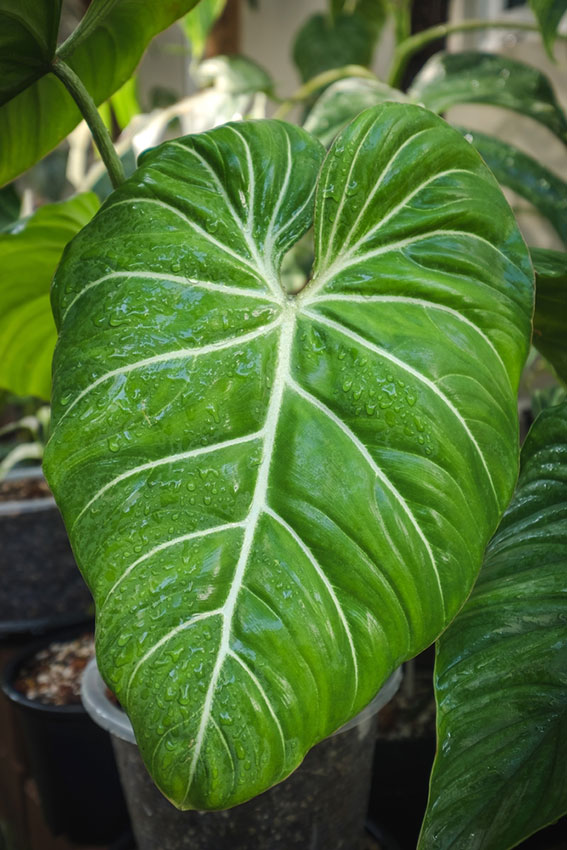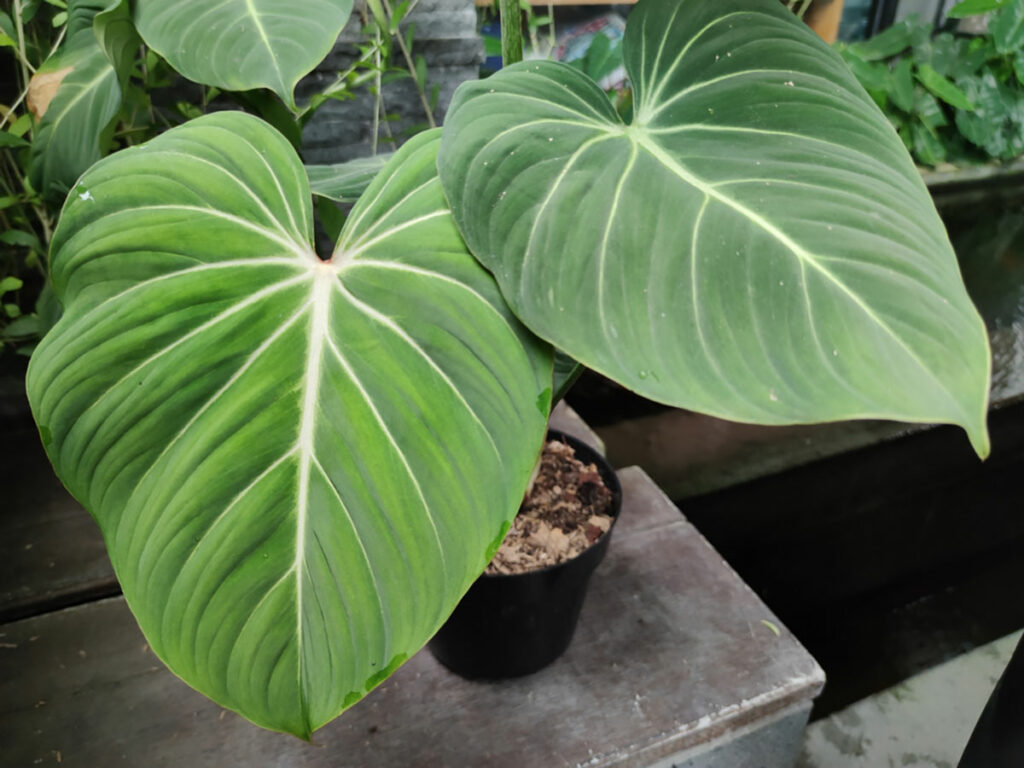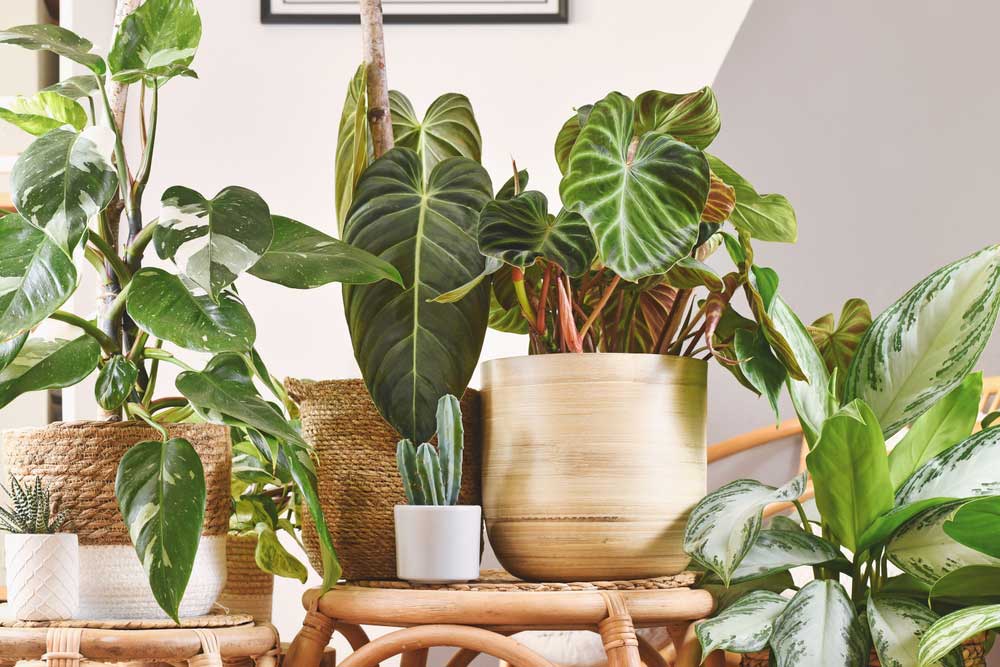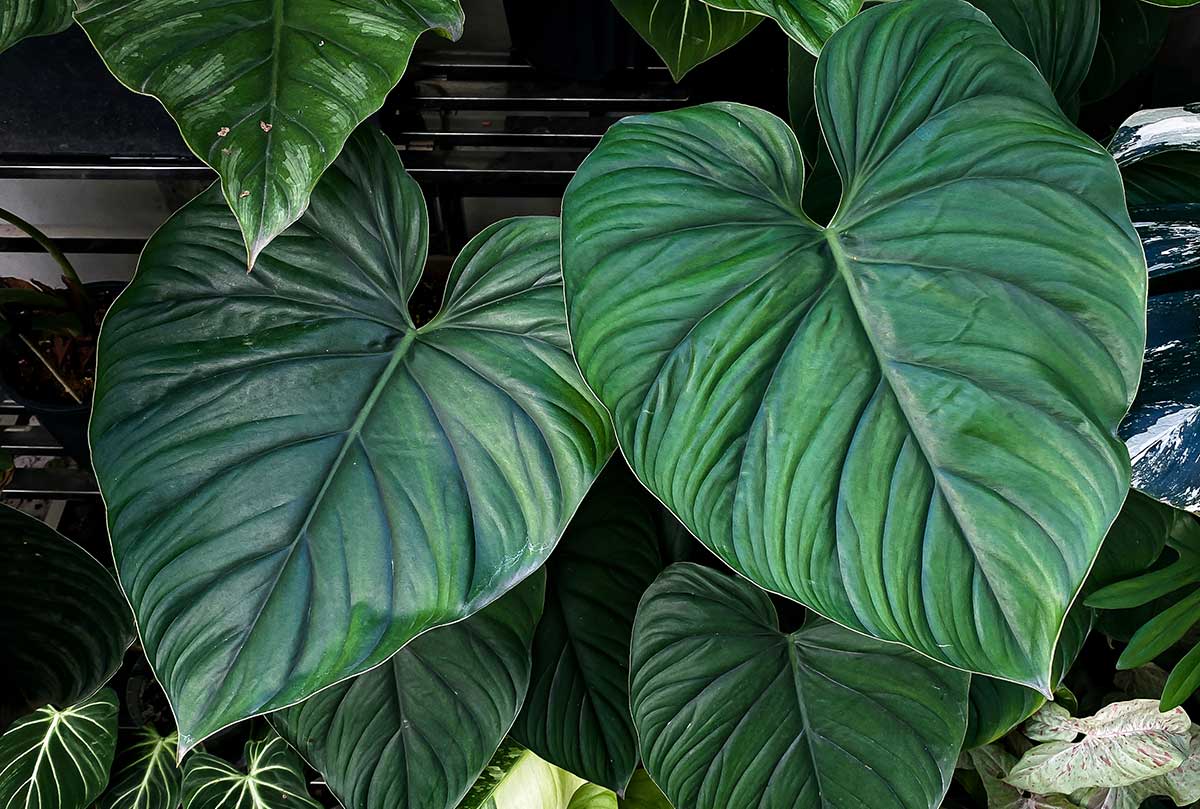Native to the tropical rainforests of Central and South America, philodendron is a genus of plants with approximately 450 species. These climbing or vining plants thrive on the forest floor, where they receive filtered light.
Caring for Philodendrons
Philodendrons are a popular houseplant throughout the U.S., although they will survive outside all year round in zones 9-11. They are prized for their beautiful green leaves, ability to grow in low-light conditions, and ease of care.
Philodendrons can be grown upright on a trellis or pole or used in hanging baskets where the vines are allowed to cascade over the sides.
| Botanical Name: | Philodendron |
| Common Name(s): | Philodendron |
| Plant Type: | Tropical houseplant |
| Mature Size: | Varies |
| Sun Exposure: | Indirect sunlight |
| Water Needs: | Moist |
| Soil Type: | Well Drained |
| Soil pH: | 5.0 – 6.0 |
| Maintenance: | Low to Medium |
| Hardiness Zones: | 9-11 |
| Toxicity: | Mildly Toxic to Pets and Humans |
Light
Philodendrons are favored for their ability to thrive in low light conditions, but that doesn’t mean they don’t need any light. Most varieties perform best in bright, indirect light from a southern or western window but cannot tolerate direct sunlight.
Typically, variegated varieties need more light than their solid green relatives. If they are grown in an area with too little light, they will lose their beautiful coloration, as the plant will compensate for the lack of light by producing more green leaves so that it can perform photosynthesis for the plant.
Use a sheer curtain to filter the light, or place your philodendron across the room from the window. To assess whether your philodendron plant is getting too much light, hold your hand between the plant and the window and observe the shadow. If the edges of the shadow are well-defined, the area receives too much light for your philodendron. Move it to a position where the shadow from your hand is muted with fuzzy edges.

Soil
Philodendrons do best in slightly acidic, well-drained soil with a pH between 5 and 6. To make your own potting mix for philodendrons, mix equal parts of all-purpose potting soil, peat moss, and perlite. This creates the ideal mixture for philodendrons allowing the soil to drain well while providing plenty of aeration for the roots.
Poorly draining soil can spell disaster for philodendrons as they are susceptible to root rot if grown in soil that remains soggy or does not drain well.
Water

Philodendrons need soil that is slightly moist but not soggy. How often you need to water them depends on many factors, such as the plant’s size and growth rate, the size of the pot, the time of year, and other environmental factors, such as the humidity level and temperature in your home.
While your philodendron may need to be watered once a week in the spring and summer when it is actively growing, its needs change during the fall and winter when its growth slows and the plant rests.
It is best to allow the top two to three inches of soil in the pot to dry out before watering your philodendron plant.
Temperature and Humidity
As tropical plants, philodendrons prefer a humidity level between 60 and 70 percent but will adapt to the lower humidity levels in your home. However, you can help them by raising the humidity near your philodendron plants using a humidifier or placing the plant on a pebble tray.
Philodendrons prefer temperatures between 75 and 85 degrees during the day but like it a bit cooler at night. Choose a location for your philodendron where nighttime temperatures dip to 65 or 70 degrees at night.

Fertilizer
Philodendrons are medium to heavy feeders and benefit from regular fertilizer throughout the year. Choose a houseplant fertilizer high in nitrogen and mix it to ½ strength. Apply it to your philodendron plant once a month, from early spring until fall.
Stop fertilizing your plant in October when its growth slows, and it enters a dormant period. Withhold fertilizer until early spring when new growth resumes.
Are Philodendrons Toxic?
Philodendrons are mildly toxic to both pets and humans. Ingestion can cause burning or swelling of the tongue, throat, and mouth irritation, vomiting, and diarrhea. Although it is rarely fatal, you should seek medical attention in the event your child or pet accidentally ingests any part of the philodendron plant.

Potting and Repotting
Philodendrons prefer to be slightly rootbound and may suffer if planted in a pot that is too large for their roots. Because a larger pot holds more moisture, the roots of the plant may only be able to absorb some of the water from the soil. This means your philodendron can be sitting with its roots in soggy soil for days leading to issues with root rot and other fungal diseases.
When your philodendron outgrows its current pot, choose a new pot that is 2 inches larger than the current pot. Although you can repot them nearly any time of year, the best time is either early spring when new growth appears or during the summer.
Deadheading and Pruning
Philodendrons typically do not require pruning other than removing old or damaged foliage.
FAQs
Can you root philodendron cuttings in water?
Philodendron cuttings root readily in water. Take a 4-to-6-inch cutting, clipping just below a node, from the plant and put them in a glass of water to root.
Are pothos and a philodendron the same plant?
Pothos and heart leaf philodendrons look similar and are often confused, but they are not the same plant. Pothos have waxy leaves that unfurl from the tip of the vine. The new leaves are light green.
Philodendrons produce new leaves covered with a papery, brown sheath that falls off as the leaf unfurls. New philodendron leaves are pinkish brown.
Are philodendrons good for beginners?
Philodendrons are an excellent choice for beginner houseplant owners. They adapt readily to household climates and require little care other than watering and occasional fertilizing. They are also quick growing.




